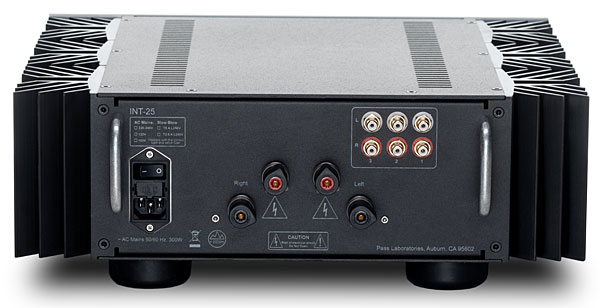| Columns Retired Columns & Blogs |
"... I would never purchase an integrated amplifier with a DAC or phono stage residing in the same box. To me, that's like buying an active loudspeaker. Why would I pollute a fine audio component with a non-upgradeable and possibly third-rate ancillary".
I've often wondered why magazines ostensibly dedicated to audiophilia justify reviewing pre-/integrated amplifiers without phono stages (let's forget about the IC that is a DAC), and this lamest of justifications above provides the context for asking. Why, firstly, would anyone have any faith in the sound-quality chops of such an amplifier when the highest-quality audio source (i.e., a turntable) was not used in its design? Does this reviewer kid himself (or, more importantly, his readers) that such designers use live, all-analogue FM broadcasts to design, test, and voice their amplifiers, or is he content for such amplifiers to be designed with digital audio signals as their source? Even if a turntable source was used (presumably using a non-'third-rate' phono stage), how could any end-user know how such an amplifier would sound with vinyl unless the same phono-stage used by the manufacturer in design or the reviewer in appraisal were also purchased alongside? It behooves amplifier designers -- people like Pass in particular -- to use the best quality source available in designing their kit and if there's no phono input then it wasn't used. If a turntable was used, then there is no justification whatsoever for not including a phono input.
The reason a phono stage belongs in an amplifier is because it equalises and amplifies the output of a phono cartridge, both of which are the only jobs of an amplifier (and, similarly, why a DAC does not belong in an amplifier, any more than a tweeter does). If Nelson Pass or indeed anyone else cannot design an integrated amp ('integrated' being the operative word here) worthy of being reviewed by Stereophile without putting a 'third-rate' phono stage in it, then he is worthy only of our opprobrium and certainly not of our patronage. Of course, he is perfectly capable of doing so, and it's silly reviewer statements like the one starting this review heading this comment that let him and many like him get away with not doing so.
Come-on Stereophile -- you aren't 'What Hi-Fi'. There's plenty of 'magazines' that pander to the computer-as-music-source crowd. Stick to the audiophilia that is implicit in your name...












































